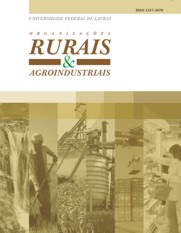The Performance of U.S. Ethanol Futures Markets on the World Stage
Resumo
This study examines the feasibility of Brazilian ethanol dealers using the U.S. ethanol futures contract as a price-risk management vehicle. This application is appropriate given that the U.S. and Brazil are the world’s largest and second largest ethanol producers. This specific application is part of a larger consideration as to how U.S. futures markets perform for hedging international commodities. This study considers the reasons why U.S. ethanol contracts might and might not work as hedging vehicles for Brazilian ethanol inventories prior to conducting an empirical investigation. Our empirical hedge ratio model formulates three components of price risk for international users of U.S. futures markets. These are (1) the risk of commodity price change given the initial currency exchange rate, (2) the risk of exchange rate change, given the commodity’s initial price, and (3) the risk of covariation between the commodity’ price and the currency exchange rate. Based on these sources of price risk, the hedging portfolio consists of the U.S. ethanol futures contract and the Brazilian real futures contract. Our analysis reveals that the U.S. ethanol futures contract provides little price-risk protection for Brazilian ethanol holder while the Brazilian real futures contract offers some protection. In contract, we present results from crude oil futures markets where the U.S. crude oil futures contract gives the bulk of price risk protection and the currency futures contract provides much less. We conclude (1) that the ethanol findings are not universal and depend on the provisions of the U.S. ethanol futures contract and (2) the contracts traded on the Brazilian futures exchange do not compete directly with the U.S. contracts.


